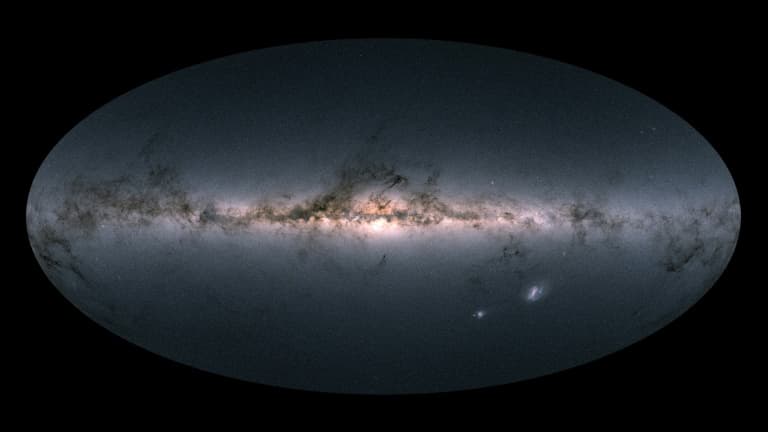The European Gaia Space Telescope has discovered a black hole in the Milky Way with a mass 33 times that of the Sun.
The European Gaia space telescope, which is mapping the Milky Way, has discovered a black hole with a record mass 33 times that of the Sun: unprecedented in our galaxy, a study published on Tuesday (April 16) suggests.
The object, called Gaia BH3, located 2,000 light-years from Earth in the constellation Auriga, belongs to a family of stellar black holes that result from the collapse of massive stars at the end of their lives. They are incomparably smaller than the supermassive black holes residing in the hearts of galaxies, whose formation scenario is unknown.
It was “by chance” that Gaia BH3 was discovered, says Pasquale Panuzzo, a CNRS researcher at the Paris-PSL Observatory and lead author of the paper published in Astronomy & Astrophysics Letters.
“We saw a star slightly smaller than the sun”
Scientists from the Gaia consortium were removing the most recent data from the probe with the goal of releasing another catalog in 2025 when they came across a particular binary star system.
“We saw a star slightly smaller than the Sun (about 75% of its mass) and brighter orbiting an invisible companion” that can be identified by the disturbances it causes, says Pasquale Panuzzo, in charge of spectroscopy. processing of Gaia.
The space telescope gives very precise positions of stars in the sky, so astronomers were able to characterize the orbits and measure the mass of the star’s invisible companion: 33 times that of the Sun.
Further observations from ground-based telescopes confirmed that it was indeed a black hole with a mass far greater than that of the stellar-origin black holes already known in the Milky Way—between 10 and 20 solar masses.
A “sleeping” black hole
Such monsters have already been detected in distant galaxies through gravitational waves. But “never in ours,” says Dr. Panuzzo. Gaia BH3 is a “dormant” black hole: it is too far from its companion star to remove its material and therefore does not emit any X-rays, making it difficult to detect.
The Gaia telescope succeeded in finding the first two inactive black holes (Gaia BH1 and Gaia BH2) in the Milky Way, but they have standard masses. Unlike the Sun, the small BH3 binary star is “very poor in elements heavier than hydrogen and helium,” the Paris Observatory explained in a press release.
“In theory, only these metal-poor stars can create such a massive black hole,” notes Dr. Panuzzo. The study therefore suggests that the “progenitor” of the black hole was a massive star also poor in metals. The system’s 12 billion-year-old star “ages very slowly,” while the star that created the black hole “lived only 3 million years,” he says.
“These metal-poor stars were very present at the beginning of the galaxy,” adds the scientist.
Another curiosity of the star pair: in the disk of the Milky Way, it rotates in the opposite direction to the other stars. “Maybe because the black hole would have formed in another smaller galaxy that would have been eaten up early in the life of the Milky Way,” he suggests.
The ESA (European Space Agency) Gaia probe, which has been operating 1.5 million kilometers from Earth for 10 years, delivered a 3D map of the positions and movements of more than 1.8 billion stars in 2022.




